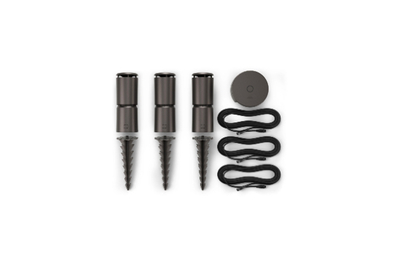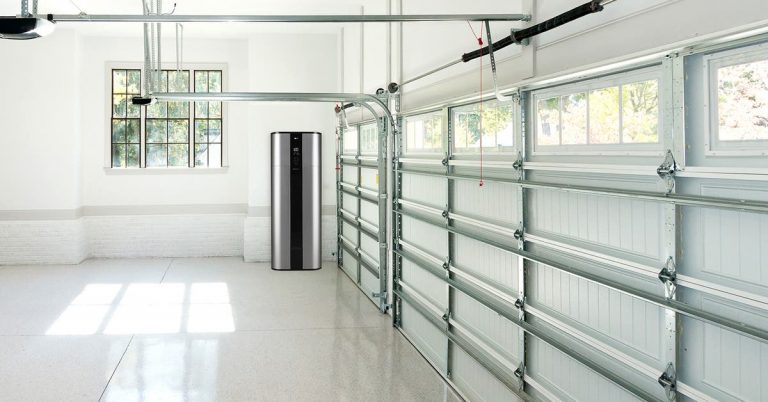The 6 Best Mosquito Control Devices of 2025

Upgrade pick
For a more comprehensive mosquito system that’s much easier to control, protects a wider area, and requires no charging or additional fuel source, we like the Thermacell LIV Smart Mosquito Repellent System. This is a scalable system with a number of diffusers (which are hardwired to a hub) placed around your yard or patio. The repellers are activated through an app that lets you turn them on or off, schedule them, or put them on a timer. The app also sends notifications when the repellent is low or when the diffusers have been on beyond a preset amount of time. The repellers look like very nice landscape lights (they actually do have a lighting function), and the components overall have a very sturdy and good feel to them. The scope and abilities of this system are far beyond those of our other picks, and the cost reflects that. The smallest kit, which includes three repellers (each with a 20-foot diameter coverage area), costs roughly $800, and the price only increases from there. This system is not for everyone, but the added conveniences and controllability will likely make it worthwhile for some.
The LIV consists of a hub, wiring, repeller units, and the app. The hub—which is the size and shape of a white noise machine—plugs into an exterior outlet and, through hardwired connections (each cord is 24 feet long), controls the repeller units. The units are wired in series, so only one is connected directly to the hub. The repellers are about the size of a 1-liter soda bottle and look like high-end landscape lights, which, in a way, they are. Each diffuser has a series of LEDs that can be activated through the app to shine in a variety of colors and throw a little light. The top of the repeller twists off, revealing where you put the repellent pod.

The repellers have a narrow bottom, so they’re not easy to balance unless they’re on very flat ground. Each LIV kit comes with ground stakes, which attach to the diffusers and can be stuck into the ground, securing the units. Hardscape bases are also available at an additional cost (roughly $20 each), for placing the diffusers on impenetrable surfaces, like a patio or a stone walkway.
These component parts are all very nicely designed, and setup is intuitive. The repeller units have the hefty feel of a quality item and are free of the small imperfections that mark inferior products. The cords are all thick rubber and can be safely buried once the system is set up, so they don’t get damaged by something like a string trimmer. Everything has a polished look, and at no point did we feel the need to hide any of the repellers due to any kind of unsightliness. Setting up the system is very simple—just position the repellers and the hub, and then wire everything together. It took us about a half-hour for a three-diffuser setup.
The app is minimalist in a good way and offers a level of control that no other spatial repellent has. Most importantly, it can schedule the repellers or set them on a timer so they’ll shut down after, say, two hours. With these easy safeguards in place, this system almost ensures you’ll never waste repellent when you’re not enjoying your outside space. It’s no fun to find that a spatial repellent is still on hours after you’ve gone inside. The app also will send notifications when the system is warmed up, when the repellent is low, and when the scheduled timing starts and stops. That last item is important because you could schedule the repellers to turn on every morning when you drink your coffee on the patio. But if it’s raining out, the notification allows you to shut the repellers off for that day, stopping the loss of repellent.
Though the bulk of the LIV’s functionality is housed only in the app, there is a single button on the hub that can turn the system on and off. This is the LIV’s only manual control.
The LIV uses a 5.5% concentration of metofluthrin, just as the E90 and EX90 do, but the vials are not compatible. The LIV repellers use larger pods, which provide either 40 or 100 hours of repellency. Each repeller covers an area with about a 20-foot diameter. Refill vials range from about $20 each to about $40, but remember that the app-based scheduling and timers will help keep usage to minimum.
We enjoyed using the LIV. In fact, once we set it up, we basically forgot about it. We used it to protect a patio, and it was scheduled to be on from 4 to 6 p.m. every day, typically the time we used the grill to cook dinner and then ate at the patio table. At first we weren’t using the notifications, so the LIV would run even if we weren’t there, if it was too windy for a spatial repellent, or if it was raining and we decided to eat inside. But with the notifications on, we got reminders that the diffusers had activated, and we could shut them off with a tap of the screen. It was nice eating outside in a buggy area and not having to deal with mosquitoes.
We didn’t see many downsides to the LIV (other than the cost, and we’ll get to that in a minute). We did think the ground stakes were a little too large, and we had trouble in rocky soil. We ended up using the hardscape bases, but the issue there is that they’re not part of the base kit, and under normal circumstances you’d have to order them separately. If you went into the setup thinking the stakes would work but then they didn’t (as was our experience), all of a sudden you’re spending an additional $20 or so on each hardscape base. If you have the five-repeller unit, that’s an additional $100 and a delay in your setup while you wait for them to arrive. We appreciate the stability of the oversize stakes, but they do seem excessive. And we would have preferred to see a way for both the hardscape bases and stakes to somehow be part of the base kit (or at least we’d have liked the option to choose one at checkout).

Since the Thermacell LIV is connected to the internet, we read through its privacy policy, and we sent Thermacell a questionnaire to learn more about the privacy practices for the LIV specifically. The company told us that no customer data is shared or sold to third parties, and any data sent from the LIV to Thermacell’s servers is encrypted in transit. Most importantly, Thermacell can issue software updates to the hub. This is something the company told us it will do to implement improvements during the three-year warranty period, and it will continue to issue security updates for the lifetime of the product. Thermacell does not offer a bug bounty program for researchers to submit security issues, which is too bad considering the company’s dedication to repelling bugs in the real world.
And now for the cost of the LIV. It’s expensive. A three-repeller system is currently around $800, a four-repeller system is roughly $900, and the five-repeller system is normally about $1000. To run additional systems at your place, you need a new hub and connected repellers. So to have repellency on the front porch as well as the back patio, you need two complete systems (that would run off the same app). Therefore, it’s quite a commitment to realize the full extent of what the LIV has to offer, even if you’re opting only for the most basic three-repeller system.
Is it worth it? In some ways, we think it is. For one, the convenience is unmatched versus what you get with any other spatial repellent. And because you’re able to set a schedule and receive notices when the repellers have been on past a certain point, you can conserve repellent, thereby lowering the long-term investment for replacement vials. In our experience, this is a hidden cost of spatial repellents, and we’ve grown to loathe discovering a spatial repellent that’s still on long after everyone has gone inside. A single absent-minded mishap like this could end up costing $10 to $15 per unit in repellent replacement.
However, we’re not under the impression that these kinds of savings will somehow offset the total cost of the LIV and make it pay for itself over X number of years. They won’t, but there is also a quality and convenience issue. After handling the components of the LIV for a number of months, there is no question that they’re well thought out and well constructed. From the way the repeller parts fit together to the way the wire connections are made, it’s clear they’re built to last.
The LIV system can do something that no other spatial repellent system can do: protect a large area with almost no effort. It’s true that you could place three E90s around your patio and create similar protection for only about $150, compared with the three-unit LIV’s cost of $800. But you have to turn the E90s off and on individually, and you don’t get a notice when they’re warmed up or a notification when they’re low on repellent. You can’t schedule them, and you can’t put them on a timer. If you accidentally leave the E90s on, you’re just going to waste repellent until you remember to shut them off. There is no communication between the units and yourself. So protecting a large area with E90s is certainly doable, and it’s not a terrible idea if you’re up for it. However, the LIV offers an undeniable amount of convenience that some will find offsets the buy-in cost.







